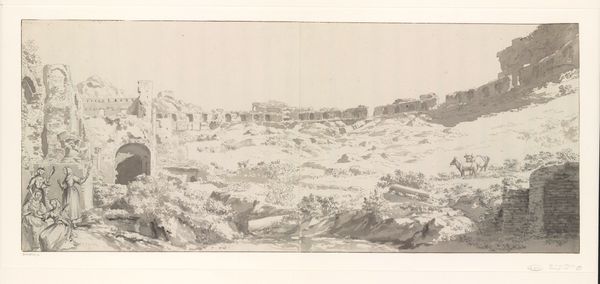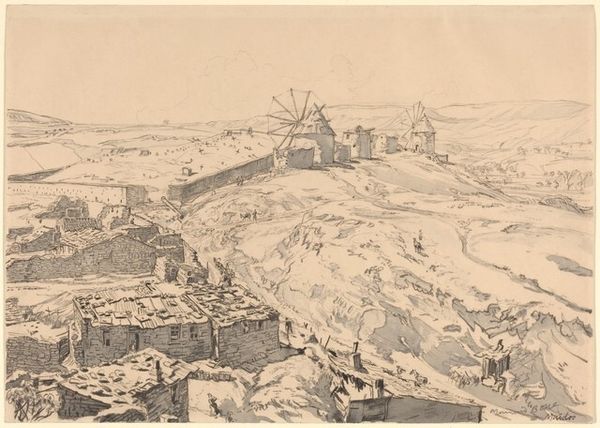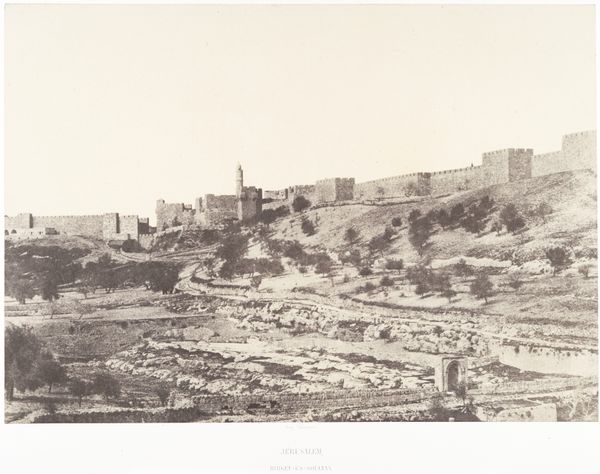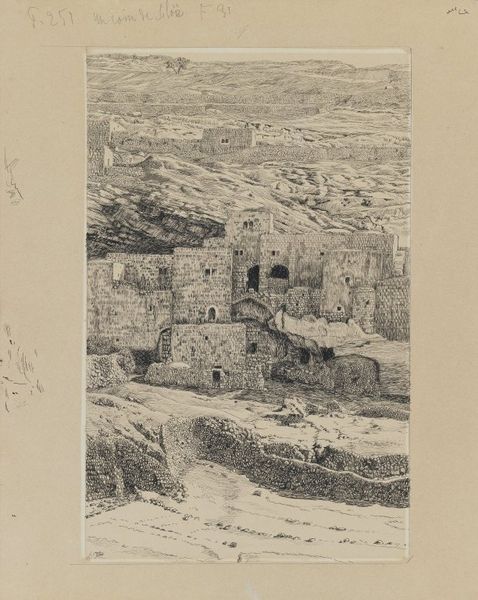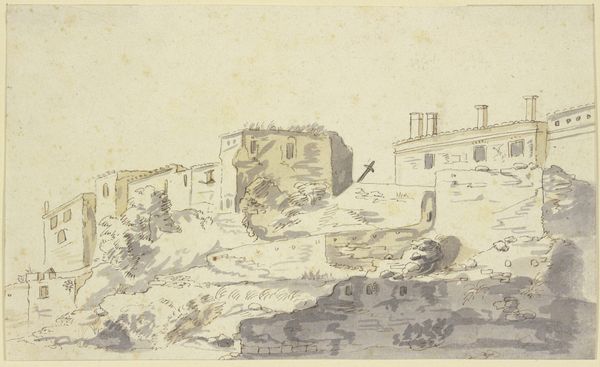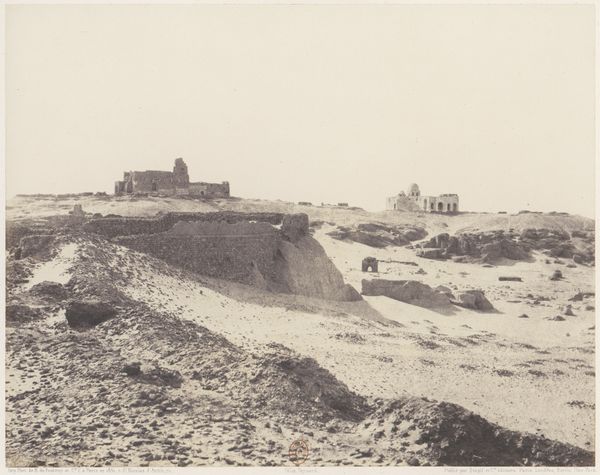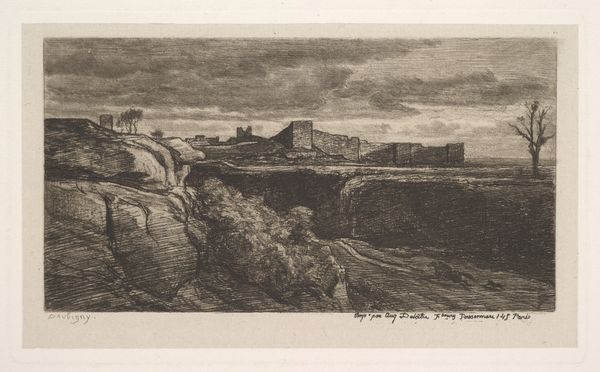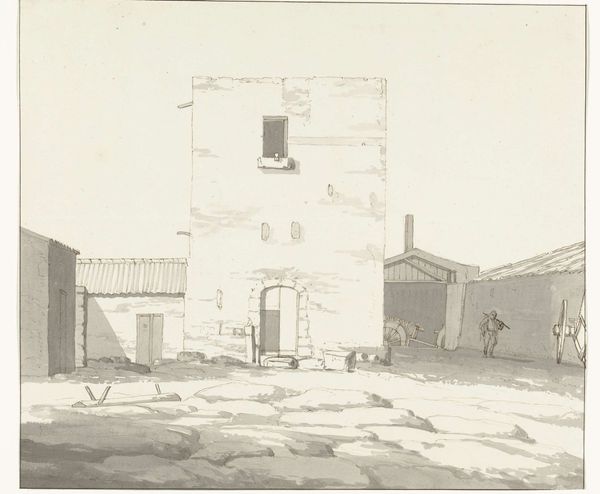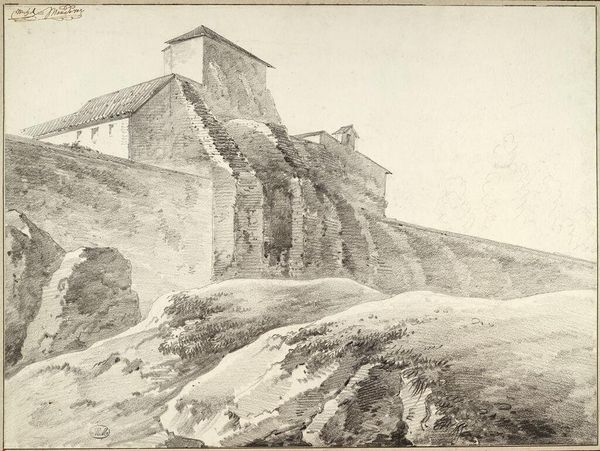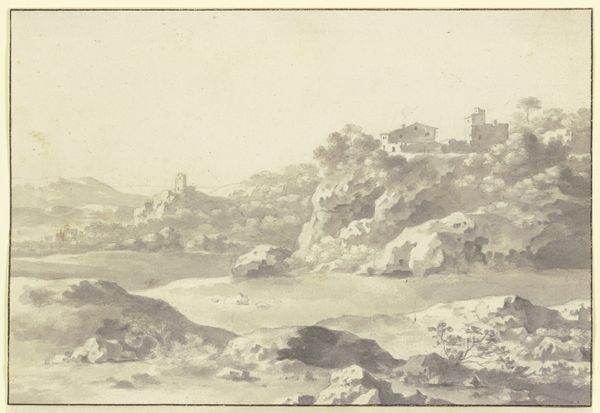
print, etching
#
ink drawing
# print
#
etching
#
landscape
#
etching
#
modernism
Copyright: National Gallery of Art: CC0 1.0
Curator: Immediately, I'm struck by its quietude; the sparse lines seem to suggest a vast emptiness. Editor: That's perceptive. What we have here is James McBey's etching, "Ras-El-Ain," created between 1918 and 1919. It showcases a landscape with architectural ruins. As a print, it makes some of the formal choices quite accessible to audiences of the time. Curator: Yes, but those choices are precisely what commands our attention now. Look at the stark contrast of light and shadow; the lines forming the architecture against that vast expanse. How is it even constructed formally? It nearly vibrates due to its minimal means. Editor: I believe that vibrancy speaks to the context in which McBey created this. World War I had just ended, and he worked as an official war artist. His landscape might mirror not just geography, but also a post-war world, marked by ruins and reflection, its structures charged sites. The very act of documenting the area positions it historically. Curator: Interesting, though even divorced from its historical placement, its visual syntax offers significant engagement. Take for example the composition of the architectural ruins in parallel to the people: is it truly a picture of "society" in its traditional mode? Editor: Certainly. McBey wasn't merely depicting a scene but presenting a specific perspective colored by colonial power structures. The architecture and even the rendering of the indigenous population speaks to those imbalanced social structures and their role as supporting mechanisms within an environment that, due to British strategic investment and other geopolitical circumstances, was facing major demographic changes at that time. Curator: Perhaps. Nevertheless, I would highlight how the artist exploits tonal range for expressive effect. The sparse applications of ink create such depth using such simplistic line and shape. That, combined with this vastness, remains as evocative now as the political message was didactic then. Editor: That said, examining McBey’s positioning and intent enriches our engagement by acknowledging its historical baggage and the conditions by which such landscapes are formed through human interference and the socio-political currents of that age. Curator: Ultimately, "Ras-El-Ain" demonstrates an exemplary harmony between stark composition and historical weight, leaving one both contemplative and moved. Editor: A truly multifaceted work—as compelling for its etched lines as it is for its etched place in history.
Comments
No comments
Be the first to comment and join the conversation on the ultimate creative platform.


